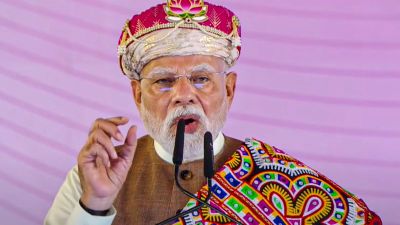Everybody loved this spy… until he vanished
• Excellent field agent, trusted friend of top officials — from handling their land investments to getting their relatives jobs in...

• Excellent field agent, trusted friend of top officials — from handling their land investments to getting their relatives jobs in the US — and a keen golfer with a healthy network…
Bit by bit, as Rabinder Singh’s profile falls into place, it’s easy to understand how the former Army Major became a prized asset in India’s top intelligence agency. It also explains why the sacked officer’s disappearance — and alleged escape to the US more than a month ago — has thrust a knife into the heart of the Research and Analysis Wing (RAW).
Given his familiarity with senior officers and the access he had to their personal lives, the fear now is that Singh could turn out to be a topnotch ‘‘talent spotter’’, used by his new handlers to ‘‘develop’’ more RAW officers.
According to sources, the Intelligence Bureau has already prepared a brief on this former 1st Gorkha Regiment officer from a middle-class Sikh family. And a senior RAW official is learnt to have made a secret visit to the US to trace Singh though the agency, for the record, denies this.
But the 55-year-old’s profile sketch has already unveiled the route that took him to the US. A recent signpost was Singh’s refusal to take up an assignment in Iran, and his strenuous efforts to bag a US posting.
But the first step in that direction was his sister Rosy’s shift to US in 1972. Rosy works for US Agency for International Development (USAID) and is suspected to have been the pointperson through whom Singh made his first contacts in the US.
As for Singh, he joined the Indian Military Academy in Dehradun — after graduating from RSD College Ferozepur — and was commissioned into the Army on June 14, 1970. But clearly, he did not achieve much in a 14-year career, even being ignored once for promotion to the rank of Lt Col. It was at this juncture that he made the crucial switch to RAW.
Even that had the classic Singh stamp. According to sources, a RAW deputation is not easy for an Army Major, unless he is backed by strong recommendations. Obviously, Singh got the right men in his Regiment to stand up for him, and moved to the RAW in 1984.
Even within the agency, he was said to have made a good impression on then Secretary (R) Aman Verma, during whose tenure the posting was regularised. Apparently, Singh even returned part of his Army seniority to be included in the 1977 batch of the RAS.
After spending a little over a year as Assistant Director at the RAW Headquarters in Delhi, he was assigned in the same capacity to the Special Bureau in Amritsar to keep a watch on Sikh terrorist groups. His experience in Operation Bluestar swung the posting his way, say sources.
Anyway, it was time now for Singh to take his first step abroad: as First Secretary in Jordan’s Indian Mission, where he tracked West Asian terrorist outfits.
The first US twist is believed to have happened then, when he met with a serious accident and underwent medical treatment in America with Rosy’s help.
Singh returned to New Delhi on completion of his Jordan tenure in the early 1990s and was made Deputy Director (Administration), again in the RAW Headquarters.
Soon, he developed a reputation as a top field agent with ‘‘healthy contacts’’ at various levels, which bagged him his second foreign posting.
This time, as First Secretary to The Hague, where he reported on Indian terrorists’ European links.
Meanwhile, on the other side, Singh managed to resettle his entire family in the US, person by person. His daughter Amrita Sandhu was virtually brought up there by Rosy, while his wife Pammi and son Ranjit moved later.
Back in New Delhi, sources say that Singh was adept at keeping several of his seniors and colleagues in good humour, especially those with family members in the US. Through his sister, he was able to get lucrative jobs in the US for wives and wards of some RAW officials.
Of late, Singh had evinced keen interest in golf too. Obviously, the golf course, for him, was yet another rendezvous point to network with senior officers.
Photos


- 01
- 02
- 03
- 04
- 05





























